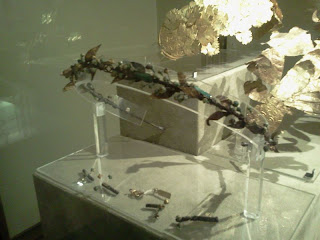The Flower (and Leaf) Crown, From Etruscan History to Modern Trend
One of the most obnoxious trends for this sad fashion year that is very luckily dying away remains the flower crown.
Sported by Lana Del Rey, seen on various runways and adopted by too many fashion aficionados gone twee at summer festivals and at other random occasions, colourful, fun and easy to make, the hippie flower crown mainly donned to prove you're a bohemian Mother Earth figure in a sweetly twee kind of way even though you buy toxic clothes made by exploited workers for high street retailers, hasn't actually got very cheerful origins.
To rediscover the early origins of this accessory you may have to visit Room VII and Room VIII of the Gregorian Etruscan Museum at the Vatican Museums in Rome.
This section features materials from the 9th to the 1st century BC, and follows the progressive and definitive converging of the Etruscan cities into the structure of the Roman state.
The history of the Etruscan people is narrated through ceramics, bronzes, but also jewellery pieces documenting the art and craft skills of this ancient civilisation. Beautiful and unique gold objects for dress and body decoration made with great technical and creative ability by the Etruscan goldsmiths during ten centuries are displayed in two rooms.
The most unusual one was made using gold and enamel leaves and enameled ceramic berries (second half of 4th century BC; fifth image in this post) and while some of them had a decorative and ornamental purpose, quite a few crowns on display here made with detailed gold oak or laurel leaves were part of the grave goods found in tombs (mid-4th century BC).
Jewellery pieces are among the most beautiful but also useful objects to help us discovering fashions and customs from other times. For example, Diodorus Siculus stated about the Etruscans that they “held a sort of record as regards ostentation in their way of living” and this is clear from the pieces on display at the Vatican Museums.



